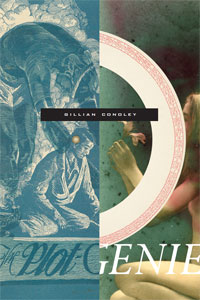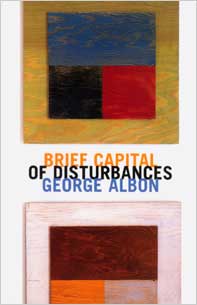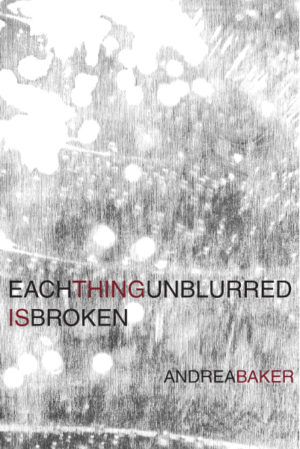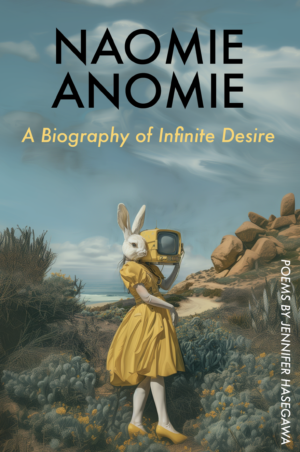Description
The Plot Genie—in its momentum, imagistic vitality, and cinematic and often improvisational arc—resembles the movement of a film more than of a poetry collection. Rich in scene, spanning and recombining a wellspring of story—both visual and literary, old and new—into a simultaneous present, these poems also examine our culture’s endless hunger for and production of narrative. The Plot Genie culls and questions what it is that holds any narrative together, and exposes some of the ways that characters behave and take shape when inhabiting a construct created by ideas. At its core, this collection looks at the ways in which we are recreated, inspired, aroused, and persuaded by the power of the stories that we listen to, tell each other, and find ourselves within, searching for human enchantment and meaning.
The inspiration for this book is a plot-generating device created in the 1930s by an ex silent screenwriter, Wycliffe A. Hill. The original “Plot Genie”—used widely by Hollywood writers until the late 1950’s—relied on a numerical game of chance, including a cardboard spinning wheel used to divine character traits and plot points. A murky underworld constantly created and recreated, peopled by hapless figures waiting to be “dialed up” and sent along multiple and fragmentary narratives, Gillian Conoley’s THE PLOT GENIE includes characters of her own invention, contemporary film actors stripped of their veneer by the rapid, shape-shifting powers of the plot genie, and characters from other, older texts, such as Frankenstein. All are ruled by the insatiable plot genie, who herself becomes a character, a force neither fully in charge nor culpable, much like our leaders or guides today. In the plot genie’s world, as in ours, the demands put upon characters by the plots in which they participate can be very high, and very hard to appease.
GILLIAN CONOLEY NAMED WINNER of the of 2017 SHELLEY MEMORIAL AWARD by Poetry Society of America for a lifetime of achievement
Finalist, 2010 Northern California Independent Booksellers Association Poetry Book of the Year
Gillian Conoley’s exhilarating new book, The Plot Genie, is a multi-storied, imaginary archaeology of contingency, eventfulness, and truth. She has created a complex confabulation, a comedy of realities–realities circulated by chance. The Plot Genie is simultaneously a speculative exploration of this reality–circulation and an assemblage of story elements produced at the intersections of its competing centripetal and centrifugal forces. Near the middle of this brilliant book’s title poem, Conoley writes that “Destiny is a world apart.” True. And reality is after it.
Lyn Hejinian
The myriad magical possibilities! This is what drives Gillian Conoley’s brilliant, always inventive, new collection. Inspired by a 1930’s device, The Plot Genie offers up options: enigmatic characters who refuse coherent narrative, graphic action that refracts innuendo, a Handsome Dead Man laughing in the sun, Artaud, Tom Sawyer, a tiger–all tightly carved, with crackling phraseology and a flagrant zeal that’s captured perfectly in her epigram from Rimbaud: “Quick! More lives!” They’re all here.
Cole Swensen
About the Author
Reviews
Excerpt
Gillian Conoley was born in 1955 in Austin, Texas, where, on its rural outskirts, her father and mother owned and operated a radio station. She is the author of six collections of poetry, including Profane Halo, Lovers in the Used World, and Tall Stranger, a finalist for the National Book Critics Circle Award. Her work has received many prizes, including the Jerome J. Shestack Poetry Prize from The American Poetry Review, a National Endowment for the Arts grant, and a Fund for Poetry Award. She lives in the San Francisco Bay Area with her husband, novelist Domenic Stansberry, and their daughter, Gillis. Poet-in-Residence at Sonoma State University, she edits VOLT.
At its best, the book reads like an exceptional film noir projected onto the mind’s eye. “The world is a weird luminescence,” writes Conoley. “A greenish glow, unhinged,” Experimental poetry fans and cinephiles will find much that haunts and stimulates.
Conoley, the plot genie behind The Plot Genie, shepherds us to the conclusion that predestination and (not or) free will make the world go around. As each force is present and accounted for, it’s this indelicate, indecorous balance that’s in charge. “No one is weaving a great shroud and no one is unweaving a great shroud but the weave is present.” Our fates are jointly and severally produced.
Formally so interesting, Conoley has constructed a fractured narrative that is a metatextual commentary on the creation of character and narrative itself. “We lay sleeping…/ not knowing/ which is more fictional—the hand in the book,/ or the book in the hand.” She intersperses photographs and photocopies of erasure poems, as well as multiple pronouns and perspectives: us, we, multiple I’s. The reader is truly swept up into this imaginary place where the Handsome Dead Man lies in a bed and E and M converse with each other, asking: “What are we waiting for? More importantly, what are we walking on?” The book functions as one long poem, a fluid and flowing journey through the imagination of creation. A joy to read, we are taken up, wrapped up; as she writes, we return to “The page/ returning to its/ hunger.”
Expressed through the easily recognizable and distinctly animal image of the tiger, Conoley suggests that poetry’s ability to be a printed, physical thing is driven by as much necessity and inevitability as the tiger’s inevitable need to feed itself. The power and actuality of books lies in their physicality, in their treatment as real spaces, as objects and artifacts, and this is perhaps the greatest revelation The Plot Genie has to offer. By transferring the resonance and activity of the original Plot Genie books to a setting in which the characters and narratives themselves are given autonomy and agency, Conoley shapes an even stronger vision of the physical book as an element of poetics, exposing its layers of realities within and including itself, and presenting an effusion of awareness of the consequences and contingencies of these realities to the reader.
Conoley’s writing is always smooth and light, no strain or presumption, no huffing and puffing. She plays easily with different ideas; for instance, pages 110 through 112 are whited out against a grey background as if erasures of letters. Page 114 uses different fonts, some of the lines crossing over others as if giving a nod to Susan Howe and her writing-over techniques. With the same ease she achieves a striking range of diction, of image and idea.
As a child Miss Jane Sloan came upon a diamondback rattler. On a girl scout day camp, s’mores and wieners, old gray sheds, blisters and sunburn, at least one case of bull nettle rash on a bare ass. Motes drifting above weedy path like automata surveying an earlier globe. The diamondback did not rattle. In hot noon sun, pungent sulfur smell of snake, the child body of Miss Jane Sloan alarmingly tangible as she walked backward, nervous spasms beneath her white socks, high grass parting like disinterested third persons standing aside to let her pass, to let her back so far away, just far enough so she could still see, where. . . . look, there is a wooden bench just strong enough for her to stand on. It was a beautiful sunny day. A peculiar speech signal could be overheard between suspects. I was afraid I was about to permit an unrecognized sister to starve. A relative had decided to jump a bail bond. Part of a body, or a portion of the spoils, was found in the possession of the subject. And Miss Jane Sloan went down. She went down the white road of aftermaths, no Titanic. She went down the alterations of, to the barely beyond, where everything was begging to come back to where we live. When Miss Jane Sloan closed her eyes she could feel slight neuronal embraces caving in, tuned to the vibration of other tormentresses. Whatever sulks there. The dust eliminated. Destiny is a world apart.





